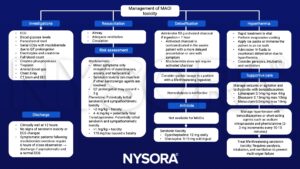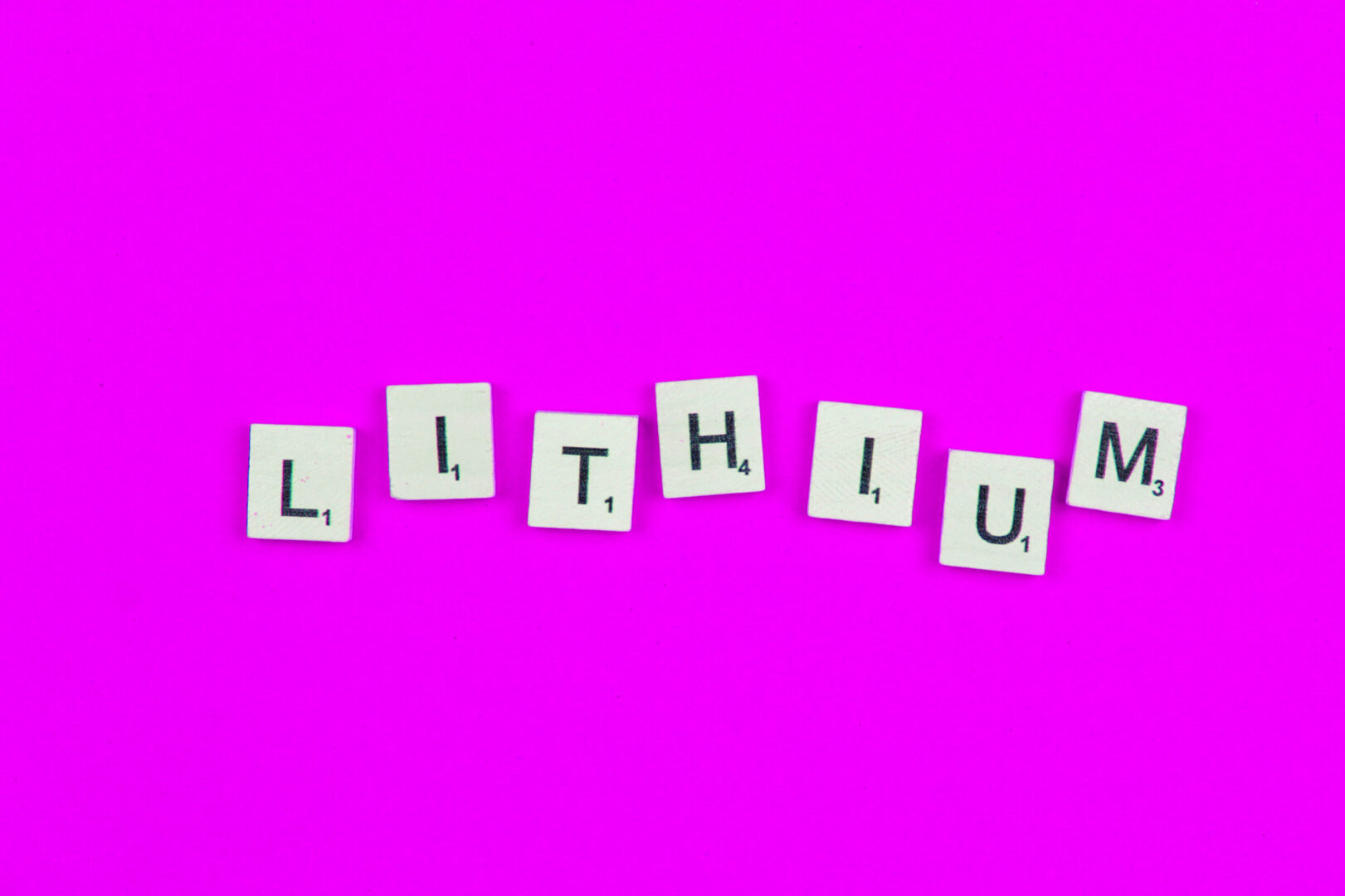Learning objectives
- Diagnose and treat MAOI toxicity
Definition and mechanisms
- Monoamine oxidase inhibitors (MAOIs) are a class of antidepressants
- MAOIs prevent the breakdown of monoamine neurotransmitters serotonin and norepinephrine and thereby increasing their availability
- MAOIs interact severely with commonly used anesthetic agents
- MAOI toxicity can be difficult to distinguish from much more common clinical entities
- Without MAO to break down epinephrine, norepinephrine, dopamine, serotonin, and tyramine, the storage, and release of these monoamines are increased
- In this way leading to tachycardia, hyperthermia, myoclonus, hypertension, and agitation
- Plasma concentrations peak within two to three hours
- Three ways in which MAOI toxicity can occur:
- Drug-food interaction with tyramine-containing foods
- When MAO found in the gut and liver is inhibited, dietary tyramine indirectly causes an amplification of adrenergic activity
- Aged cheeses, beer wine, ginseng, avocado
- Overdose as MAOIs have a low therapeutic index
- Drug-drug interaction when a MAOI is combined with other agents that increases the synthesis, release, and effect or decreases the metabolism or reuptake of monoamines
- Dextromethorphan, linezolid, methylene blue, selective serotonin reuptake inhibitors, serotoninergic agents, and tramadol
- Drug-food interaction with tyramine-containing foods
Signs and symptoms
| Mild signs | Agitation Diaphoresis Tachycardia Mild temperature elevation |
| Moderate signs | Altered mental status Tachypnea Vomiting Dysrhythmias Hypertension |
| Severe signs | Severe hyperthermia Seizures Central nervous system (CNS) depression Coma Cardiorespiratory depression Muscle rigidity Myoclonus |
- MAOI toxicity can present with diaphoresis whereas an anticholinergic syndrome should have dry skin
- MAOI toxicity is much more likely to present with generalized or ocular clonus than neuroleptic malignant syndrome
Diagnosis
- History and physical examination
- Frequent temperature measurements
- Electrolytes and lactic acid
- Salicylate, acetaminophen, and alcohol levels should be obtained
Management

Anesthetic management
- Consider risk of serotonin syndrome if combined with other serotonergic agents
- Risk of hypertensive crisis
- Avoid indirect sympathomimetics, caution with direct agents
- Avoid cocaine
- See monoamine oxidase inhibitors
Suggested reading
- Bartakke, A., Corredor, C., Van Rensburg, A., 2020. Serotonin syndrome in the perioperative period. BJA Education 20, 10–17.
- Peck T, Wong A, Norman E. 2010. Anaesthetic implications of psychoactive drugs. Continuing Education in Anaesthesia Critical Care & Pain.10;(6); 177-181.
- Gillman, P.K., 2005. Monoamine oxidase inhibitors, opioid analgesics and serotonin toxicity. British Journal of Anaesthesia 95, 434–441.
We would love to hear from you. If you should detect any errors, email us customerservice@nysora.com







